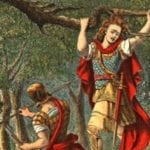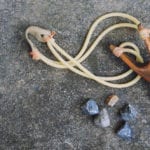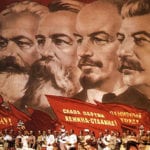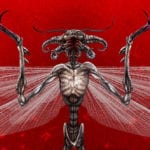 Politics
Politics  Politics
Politics  Weird Stuff
Weird Stuff Ten Bizarre Facts About The Doge Meme
 Our World
Our World 10 Ways Your Christmas Tree Is More Lit Than You Think
 Movies and TV
Movies and TV The 10 Coolest Stars to Set Sail on The Love Boat
 History
History 10 Things You Didn’t Know About the American National Anthem
 Technology
Technology Top 10 Everyday Tech Buzzwords That Hide a Darker Past
 Humans
Humans 10 Everyday Human Behaviors That Are Actually Survival Instincts
 Animals
Animals 10 Animals That Humiliated and Harmed Historical Leaders
 History
History 10 Most Influential Protests in Modern History
 Creepy
Creepy 10 More Representations of Death from Myth, Legend, and Folktale
 Politics
Politics 10 Political Scandals That Sent Crowds Into the Streets
 Weird Stuff
Weird Stuff Ten Bizarre Facts About The Doge Meme
 Our World
Our World 10 Ways Your Christmas Tree Is More Lit Than You Think
Who's Behind Listverse?

Jamie Frater
Head Editor
Jamie founded Listverse due to an insatiable desire to share fascinating, obscure, and bizarre facts. He has been a guest speaker on numerous national radio and television stations and is a five time published author.
More About Us Movies and TV
Movies and TV The 10 Coolest Stars to Set Sail on The Love Boat
 History
History 10 Things You Didn’t Know About the American National Anthem
 Technology
Technology Top 10 Everyday Tech Buzzwords That Hide a Darker Past
 Humans
Humans 10 Everyday Human Behaviors That Are Actually Survival Instincts
 Animals
Animals 10 Animals That Humiliated and Harmed Historical Leaders
 History
History 10 Most Influential Protests in Modern History
 Creepy
Creepy 10 More Representations of Death from Myth, Legend, and Folktale
Top 10 Horrifying Moments in the Bible
The Bible is full of tales of adventure, war, nations being built and destroyed and so much more. It is a veritable source of fascinating stories and historical recollections. But, along with the good comes the bad – it is also full of horrifying moments that put the goriest modern horror films to shame. This list looks at ten such tales.
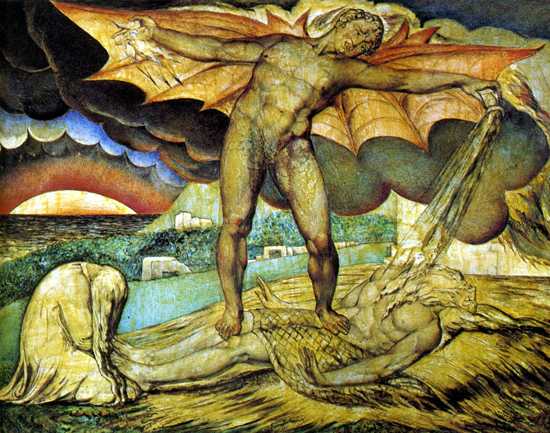
The entire Book of Job is one of the most uncomfortable lessons the Bible teaches, namely that God is in charge, what he says goes, and there is absolutely nothing any one of us can do about it, that we have precisely zero right to question him, zero authority, zero power to stop him.
In this case, God takes it away on a bet with Satan (“Satan” is Hebrew for “Accuser,” similar to prosecuting attorney), who walks into Heaven one day with the other angels. This is after the war in Heaven. It is God who baits Satan into a bet God knows he will win, that Job is the finest, godliest man on Earth and will never curse God. Satan argues that Job lives the sweet life, so God allows Satan to take away all Job’s treasured possessions, even his children. His flocks and property are stolen by surrounding enemies, and his children are all crushed to death by a wind that collapses their house.
Job refuses to curse God. So God rubs it in Satan’s face, knowing full well that Satan will simply raise the stakes. Then God allows him to torture Job’s body all over with boils and sores, but not to kill him. This is all in the first 2 chapters. Most of the rest of the Book is a lengthy rant by Job, interrupted by arguments from his friends against judging God. Job never once curses God, but demands an explanation from God and asks over and over, “Why has he done this to me?!”
From chapters 38 to 42, God finally shows up and answers Job out of a storm, “Who is this who darkens my counsel with words that have no knowledge? Gird up your loins like a man. Now I will question you, and you will answer me. Where were you when I laid the foundations of the earth? Answer me, if you even understand how.”
God explains to Job in a long diatribe that God created everything in existence, including Job, and does not have to abide by the rules, since he created the rules. His primary point is that Job, with his feeble, finite mind, cannot possibly comprehend the first thing about what is right or good or true, under God, that God alone comprehends righteousness, goodness, and truth, and that man must do as God commands. In the end, since Job never actually cursed God, God rewards his faith and obedience by giving him twice as much of everything as he had before, and blessing him and his wife with 3 daughters and 7 sons, the same number as before.
But God never gives Job (or us) an explanation for why he would allow bad things to happen to good people. The only reasonable answer is quite scary: the only reason you woke alive this morning and are still breathing is because of God’s beneficent mercy, a mercy he can take away at a whim.
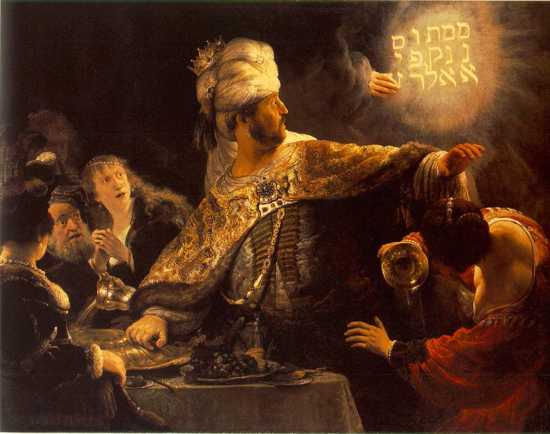
1 King Belshazzar gave a great banquet for a thousand of his nobles and drank wine with them. 2 While Belshazzar was drinking his wine, he gave orders to bring in the gold and silver goblets that Nebuchadnezzar his father had taken from the temple in Jerusalem, so that the king and his nobles, his wives and his concubines might drink from them. 3 So they brought in the gold goblets that had been taken from the temple of God in Jerusalem, and the king and his nobles, his wives and his concubines drank from them. 4 As they drank the wine, they praised the gods of gold and silver, of bronze, iron, wood and stone. 5 Suddenly the fingers of a human hand appeared and wrote on the plaster of the wall, near the lamp stand in the royal palace. The king watched the hand as it wrote. 6 His face turned pale and he was so frightened that his legs became weak and his knees were knocking.
Belshazzar was king of Babylon until 539 BC, when the Persians conquered Babylon and killed him. The Bible explains that this was God’s punishment against Belshazzar for his wanton blasphemy, especially his drinking from the goblets that his father had stolen from the Temple of Solomon in Jerusalem. Thus, God ruins his festivities when his fingers appear out of thin air and in perfect silence begin drawing Aramaic words on the wall. Only Belshazzar can see the fingers, and he is instantly horrified. Party’s over.
He calls his wise men, who cannot read the language because God has written it in Aramaic. The king’s wife recalls that this language is spoken by Daniel, whom the king summons. An annoyed Daniel refuses all the king’s gifts and translates and interprets the writing for him: “Mene, Mene, Tekel, Parsin;” “Numbered. Numbered. Weighed. Divided.”
Thus, Belshazzar’s days are numbered (the origin of this phrase), he has been weighed and found wanting; and his kingdom will be divided among the Medes and Persians. The king rewards Daniel with clothing, jewelry, and authority, and that very night Belshazzar is killed in his sleep by Persians invading Babylon, and Darius the Mede crowns himself king.
This entry was the inspiration for this list, in terms of the pure horror, as good as any movie or ghost story, involving a disembodied hand, the hand of God no less, appearing out of nowhere and bringing God’s terrifying justice.
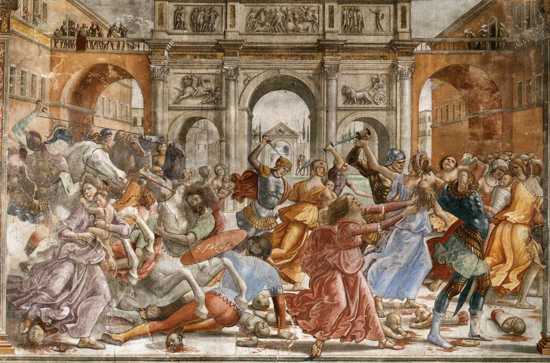
16 When Herod realized that he had been outwitted by the Magi, he was furious, and he gave orders to kill all the boys in Bethlehem and its vicinity who were two years old and under, in accordance with the time he had learned from the Magi. 17 Then what was said through the prophet Jeremiah was fulfilled:
18 “A voice is heard in Ramah,
weeping and great mourning,
Rachel weeping for her children
and refusing to be comforted,
because they are no more.”
This story only appears in Matthew. It is not known from any other works extant to the time, no other Gospels, or Josephus or Tacitus. Assuming it actually took place, it is unconscionably atrocious. Herod (who gave himself the epithet “Great”) did not even hesitate to commit genocide, and that of infants, in order to protect his power. He doesn’t just do it because he’s angry, or hates competition, but also because he’s a coward, afraid to lose his throne.
God gets him back, according to the Bible, for such unfathomably despicable murder. Described in Acts, and corroborated by Josephus, Herod appears to have contracted Fournier’s gangrene throughout the groin area, combined with scabies, which putrefied his genitals and swelled his scrotum until worms burst from it.
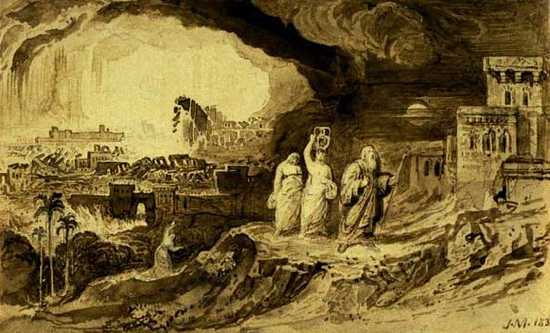
23 By the time Lot reached Zoar, the sun had risen over the land. 24 Then the Lord rained down burning sulfur on Sodom and Gomorrah —from the Lord out of the heavens. 25 Thus he overthrew those cities and the entire plain, destroying all those living in the cities—and also the vegetation in the land. 26 But Lot’s wife looked back, and she became a pillar of salt.
27 Early the next morning Abraham got up and returned to the place where he had stood before the Lord. 28 He looked down toward Sodom and Gomorrah, toward all the land of the plain, and he saw dense smoke rising from the land, like smoke from a furnace.
This is the prototype of the “fire and brimstone” aspect of the Bible. We speak of this event solely in terms of the horror its witnesses must have experienced. Some analyses have theorized that the description of the actual catastrophe is a pristine account of a nuclear explosion. It would have to have been a non-radioactive explosion, of course, since the bones of all animals and people buried before 1945 did not have Strontium-90 in them. With the detonation of the first atomic bomb at Alamogordo, NM, radioactive Strontium-90 is now forever a part of all living organisms and can be found in your bones.
God may have simply thought the explosion out of thin air, and it may have been the same power as a nuclear explosion, thus the mushroom cloud that would have looked like smoke from a furnace. Or, as he always seems to do, God may abide by his own laws of nature, leaving perpetual room for argument over his existence.
There is a fairly new theory out there that “the Lord rained down burning sulfur” indicates a meteor airburst or multiple meteor impacts. Properly speaking, it is possible that an asteroid did it, in 3123 BC at what is now Kofels, Austria. The asteroid clipped the top of Gamskogel peak at an angle of 6 degrees, traveling SE and smashing into Kofels with such speed that the debris it blasted into the atmosphere traveled in a mushroom cloud all the way to Sodom and Gomorrah where it rained down on the cities, igniting everything made of wood, clothing, and flesh, with chunks of flaming rock large enough to knock down the sandstone buildings.
The Bible is clear that not a single person made it out alive except Lot’s family, saved by two angels who may have been Michael and Gabriel.
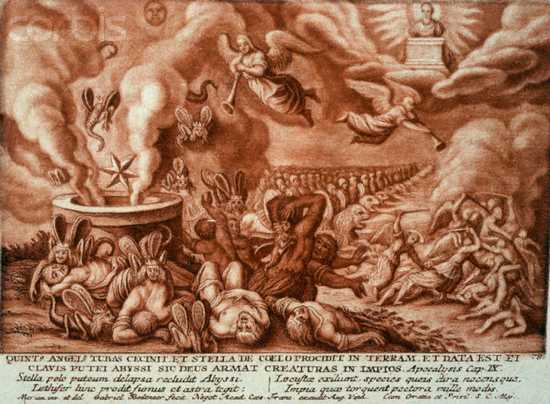
7 The locusts looked like horses prepared for battle. On their heads they wore something like crowns of gold, and their faces resembled human faces. 8 Their hair was like women’s hair, and their teeth were like lions’ teeth. 9 They had breastplates like breastplates of iron, and the sound of their wings was like the thundering of many horses and chariots rushing into battle. 10 They had tails with stingers, like scorpions, and in their tails they had power to torment people for five months. 11 They had as king over them the angel of the Abyss, whose name in Hebrew is Abaddon and in Greek is Apollyon (that is, Destroyer).
For the Revelation, you have to think in terms of metaphor, because a lot of the horrors, the signs and wonders throughout the book are obviously meant to represent other things. The overall story, however is no metaphor. Something horrible is going to take place, brought on by man’s contemptible sin, resulting in God’s final fury against it. God and Jesus are not metaphorical in the book, and neither is Satan. This is what makes the Revelation of Saint John the Divine, who was possibly the Apostle John, such a difficult book to interpret. Some events and descriptions seem more likely metaphorical than literal, while others seem the opposite. John Calvin famously refused to write a commentary on this book, stating flatly that he didn’t understand it.
But the infamous Locusts of the End Times, when you think in terms of John not understanding what he was looking at, could very well be a metaphor for helicopters. The crowns of gold could be the sun glinting off the rotor blades or the windshield. The human faces could be the pilots as seen through the windshield, or the windshield itself could look like two big eyes. The hair like women’s hair could be what John thought he saw in the spinning blades in mid-air. The teeth like lion’s teeth could be the popular “jaws” decal some helicopters and planes feature. Breastplates of iron is straightforward enough in this context, but the clincher seems to be “the sound of their wings was like the thundering of many horses.” Multiple helicopters flying together sound just like that.
The stingers in their tails is more difficult to explain, but it could be that John saw missiles and rockets being fired out the front of the helicopters, and the white smoke trail of each shooting out the back. The identity of the angel of the Abyss is impossible to ascertain, but the “jaws” decal some helicopters sport is a popularly American addition. If so, America may be attacked, by a nuclear missile described immediately before the locusts as the star of Wormwood, or Bitterness (radioactivity) blazing like a torch, given the key to shaft of the abyss, out which smoke rises like a gigantic furnace; and America would then be understood to retaliate against the aggressor with helicopters.
Or the locusts could be actual locusts made of iron, which is even more horrifying.
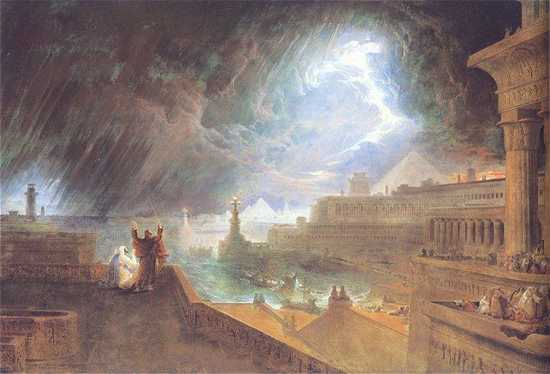
When God had had enough of his people being tormented by hard bondage in the land of Egypt (400 years of it), he sent Moses to prepare the way for him. Multiple times, God “hardened Pharaoh’s heart” in order to get glory for himself by continuing his miraculous deeds. First the Nile River turned into blood. Then out of the river came frogs. Then lice or fleas. Then biting flies. Then a pestilence that killed the Egyptian livestock. Then boils and sores. Then hail mixed with fire. Then locusts. Then darkness, and finally the death of the firstborn male of every Egyptian household.
The Israelites were spared all these plagues. Then Pharaoh let the Israelites go. He could not do so until after the 10th plague because God hardened his heart. This kind of messes with free will, doesn’t it? But the Bible never says God will not interfere with free will. In fact, the Bible is clear many times that God will break any rule he feels like breaking in order to accommodate his will.
Scientifically, some of these plagues have plausible explanations. The river becoming blood and not water may be taken as a metaphor for red algae, which kills fish. Frogs, however, can escape it by coming onto land. But there is no water in Egypt except the Nile, and in such a hot, dry climate, frogs don’t last long. Their carcasses brought lice, gnats, fleas, flies, and surely mosquitoes. The flies sucked the blood of the livestock. This eventually transmitted anthrax which killed the livestock, and then infected the Egyptians with boils and sores. Locust swarms are well known throughout the Sahara and Middle East. Where there are crops, locusts will eventually descend in clouds.
To surmise the scientific causes of the hail, darkness, and death of firstborn is much more difficult, and inevitably so coincidental as to be hard to believe. The hail and darkness might have been caused by the Santorini eruption, which would have rained down burning debris like hail easily as far as Egypt, with ash that blocked out the sunlight. The Israelites saved their firstborn by smearing lamb’s blood on their doorsills (a metaphor for #2) and staying indoors.
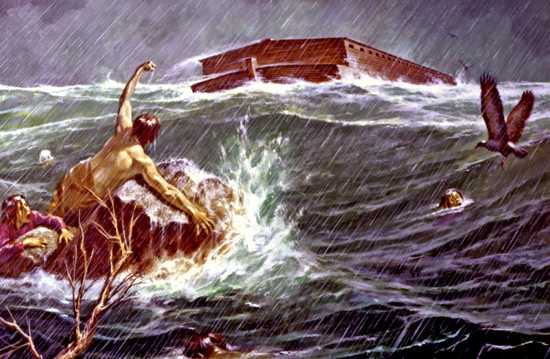
11 Now the earth was corrupt in God’s sight and was full of violence. 12 God saw how corrupt the earth had become, for all the people on earth had corrupted their ways. 13 So God said to Noah, “I am going to put an end to all people, for the earth is filled with violence because of them. I am surely going to destroy both them and the earth. 14 So make yourself an ark of cypress wood.
There’s no fire and brimstone here, but this remains the only time throughout Earth’s history, according to the Bible, that God has actually made good his threat to destroy the whole world. He sees that all men everywhere are only evil all the time, taking to themselves such women as they please, without sanctity in marriage, without law, given to malice, sadism, hatred, and violence. So God finds the only righteousness around in Noah, whom he decides will repopulate the world.
The actual flood did not last for just 40 days and 40 nights. That’s how long the rain was upon the earth. The Bible is quite clear on point, rather scary in itself: “the waters rose and covered the mountains to a depth of more than 15 cubits.” If Mount Everest is meant as the highest peak, then the surface of the water was some 22 and a half feet over its tip. Every living thing on land died, even the birds. Sea life, of course, had less of a problem, but then, since the rain was freshwater, it desalinated the salt water quite substantially, which will kill some ocean species.
Earth was flooded utterly for 150 days before the tops of the mountains became visible again. Noah and his family and all the animals were inside the ark for 1 year and 10 days. When they emerged, there was absolutely no life around them except what came out of the ark. There would have been no grass and no living trees.
Every culture around the world records a severe flood occurring at about the same time, somewhere around either 5600 BC, or 2900 BC. Thus, Noah did not actually pack his ark with 7 pairs of every clean and 1 pair of every unclean animal in the whole world. It is possible that every ecosystem was replenished in the way the Bible demonstrates.
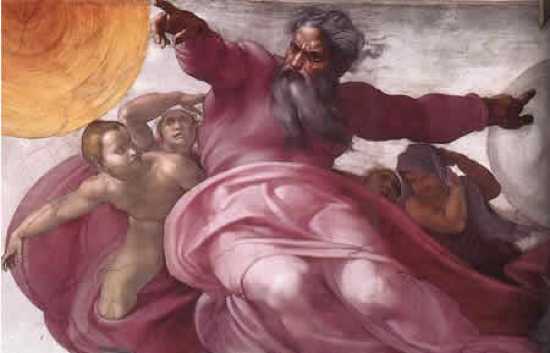
17 Then the word of the Lord came to me: 18 “Son of man, the people of Israel have become dross to me; all of them are the copper, tin, iron and lead left inside a furnace. They are but the dross of silver. 19 Therefore this is what the Sovereign Lord says: ‘Because you have all become dross, I will gather you into Jerusalem. 20 As silver, copper, iron, lead and tin are gathered into a furnace to be melted with a fiery blast, so will I gather you in my anger and my wrath and put you inside the city and melt you. 21 I will gather you and I will blow on you with my fiery wrath, and you will be melted inside her. 22 As silver is melted in a furnace, so you will be melted inside her, and you will know that I the Lord have poured out my wrath on you.’”
This passage is terrifying just on the power of its lurid imagery. God is, once again, infuriated with the impenitent sinners in Jerusalem. They are supposed to be his chosen people, but they repeatedly defy him, disobey his laws, and ignore the many instances of his justice against such impenitence. This prophecy of Ezekiel is generally thought of as metaphorical. God seems to be speaking in terms of fire in the context of refining precious metals. When you mine gold, you have to melt the raw chunks of ore in a furnace in order to separate the gold from the rest. So it is with God’s wrath. It is, and always was, intended to burn the sin out of people and leave only what is excellent in humanity.
Nevertheless, this passage is horrifying insofar as God seems quite literal in his description of what his fiery wrath will do to the inhabitants of the kingdom of Jerusalem. He will burn them so hotly that they melt like metal. This passage was Steven Spielberg’s primary inspiration for the death scenes of the Nazis at the end of Raiders of the Lost Ark, when the Ark melts their faces off and incinerates them.
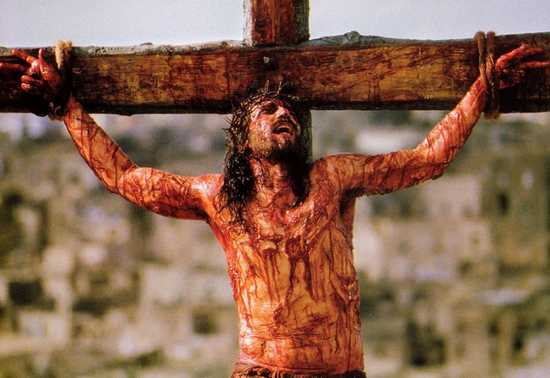
26 Then he released Barabbas to them. But he had Jesus flogged, and handed him over to be crucified.
15 Wanting to satisfy the crowd, Pilate released Barabbas to them. He had Jesus flogged, and handed him over to be crucified.
25 He released the man who had been thrown into prison for insurrection and murder, the one they asked for, and surrendered Jesus to their will.
1 Then Pilate took Jesus and had him flogged.
The Passion comprises all of Jesus’s suffering from his terror in Gethsemane to his death. His dread in Gethsemane of what was to come, which he knew perfectly well, caused him such distress that he sweat blood. Thus, his clothing would have been stained red when he was taken before the Sanhedrin and Pontius Pilate.
The Gospels do not go into detail about the actual flogging because everyone back then knew what it meant to be flogged on order of the Roman government. If you’ve seen Mel Gibson’s “The Passion of the Christ,” you know what it meant to be beaten with a Roman flagellum. The flagellum was a cat o’ nine tails made of leather strips with barbell-shaped pieces of metal tied into them. The flagella used in the film show jagged pieces of metal, but this is not accurate. These would have skinned the victim alive long before he could be crucified. Nevertheless, Jesus was beaten until he was an unrecognizable, bloody mess.
The rounded barbells, each about an inch long and half an inch wide, would bludgeon into the victim’s skin and rip out of the wounds just enough to be overwhelmingly excruciating without actually killing the victim. The standard Jewish sentence was 39 lashes, because the Old Testament states that 40 lashes is sufficient to kill a man. Thus, Jesus was beaten until he was almost dead. Then he was forced to carry his own 150 lb cross 2,000 feet uphill, according to the traditional sites. The historical Roman practice called for the victim to carry only the cross-beam. There is no reason to think Jesus was treated any differently.
Then he was crucified naked and left to die. Crucifixion typically causes death by exposure, not asphyxiation. A person may take a week or more to die on a cross, in agony all the while. Passers-by were encouraged to torture the condemned, and would cut off their toes for fun or for keepsakes. Because of the horrible torture Jesus endured before being nailed to a cross, he only lasted about 3 hours, from around noon to 3PM, possibly on Friday, 3 April 33 AD. The feet were nailed to the sides of the cross, with the nails driven through the sides of the heel bones to maximize the pain. The tops of the feet will not support the body’s weight on a nail driven through them.
He died from a combination of cardio and pulmonary edema (the blood mixed with water that flowed from the spear wound), dehydration, exsanguination, and shock. And he didn’t even do anything wrong.
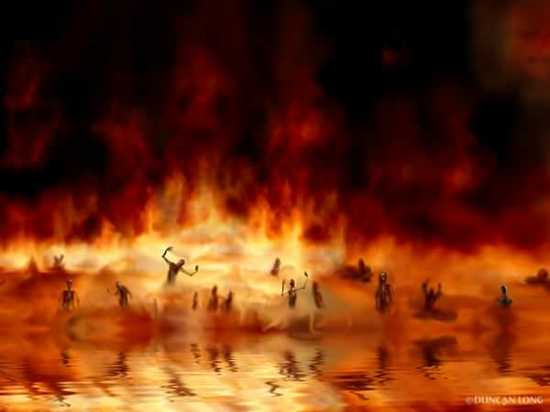
Hell is described in only a few spots throughout the Bible as a place of fire, and all these descriptions are in the New Testament except for allegorical stories like Shadrach, Meshech, and Abednego in the fiery furnace. In God’s Revelation to John, the final end of the world is depicted as a war between good and evil. The good are not Christians. Christians are raptured to Heaven before the Great Tribulation begins, sparing them the horrors that ensue.
Instead, the good who remain are those who convert to the Christian faith and die as martyrs at the hands of the Antichrist, also called the beast. He is assisted by another beast, called the False Prophet, the antithesis of the Holy Spirit. They are both controlled by Satan. They first come to power by masterful diplomacy, making the whole love them and unite behind them in the name of peace, but then, after three and a half years, the Antichrist shows his true colors, taking over the whole world, something no one has ever achieved, not Alexander the Great, Genghis Khan, Napoleon, or Hitler.
In the end, an actual battle will take place at Har-Megiddo, in northern Israel. This place name was Hellenized as Armageddon.
The Beast will lead all the world’s armies against Jesus himself, who will ride on a white horse at the head of an army in the sky of all the Christians in history. Jesus will speak the truth, and the truth will destroy everyone below. Then the Beast and the False Prophet will be “thrown alive into the fiery lake of burning sulfur.” This means that they do not die first and then go to Hell; they are thrown into Hell still alive. John is clear that the rest of the people simply die by the truth of Jesus, and are then devoured by all the birds of the air. Satan is bound in chains by a mighty angel, ostensibly Michael, and thrown into the Abyss for 1,000 years. This is not the lake of fire. The Abyss may be another word for Hell, or it may be the same Abyss out of which come the locusts of #6.
This is interesting: all those killed at Armageddon go to Hell, but not the lake of fire. This means there must be more to Hell than a single lake of fire. After the 1,000 years are over, Satan is released, having refused to change his ways. He once again leads all the world astray against God’s holy people in the city he loves, and God rains down fire from Heaven and destroys them. Then Satan is thrown in to the lake of fire where he, the Beast, and the False Prophet burn forever in eternal torture. This is the second death.
Then God makes his final judgment for or against everyone who has ever lived. Some go to Heaven, now called the New Jerusalem, with streets paved in solid gold, twelve gates made of single pearls, twelve precious-stone foundations for the 1,400-mile high, 200-foot thick walls. The rest are thrown into the lake of fire with the Unholy Trinity, and there all the impenitent sinners burn for eternity. God saves the worst for last: this is the absolute culmination of all the “hellfire and brimstone,” “the wrath of God,” throughout the Bible.
